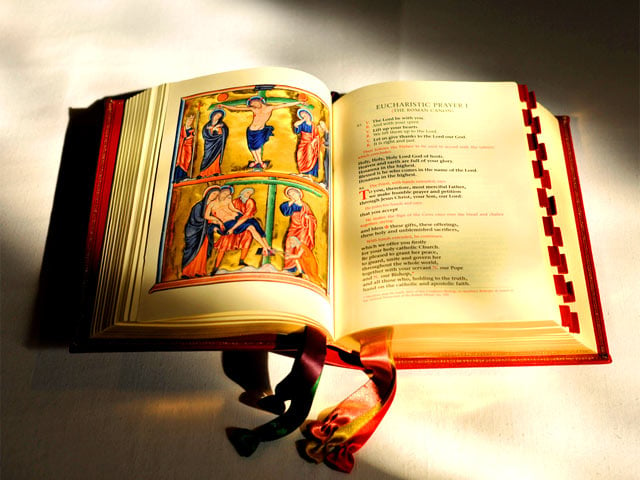- Home
- Our Community
- Our Faith
- Our Ministries
-
Parish Life
- Calendar of Events
- St. Aidan's Video Links
- Parish Blog
- News Archive
- Mass Etiquette and Information
- Ad Orientem News and Facts
- Catholic Links
- Prayers and Announcements
- Luis Dizon Reflections - Archive
- Bulletin
- Contact Us
- Search

The Victory of the Servant
Click here for the Good Friday reading
This is the last of the four Servant Songs that are found in Isaiah (see last week’s reflection, “The Vindication of the Servant”). Of the four, this is perhaps the most well-known, and for good reason: Of the four Servant Songs, this is the one that most explicitly connects to the life and work of Jesus Christ. The New Testament explicitly cites this song no less than six times (Matthew 8:17, Luke 22:37, John 12:38, Acts 8:32-33, Romans 10:16, and Romans 15:21)
The text of the song is also uncanny in the way it describes the Servant. Even without a knowledge of the contents of the New Testament, any non-Christians reading the text have read this passage and automatically connected it to Jesus. This passage is thus one of the most significant messianic prophecies of the Old Testament, both in terms of its content and in terms of its ability to convert those who read it.
The Song itself presents the climax of the Servant’s mission. He has preached to the people, and the people rejected his message (vv. 1-3). He is condemned to death by the people, and accepts this condemnation willingly and without protest, because He knows that His death is the means by which his people’s sins will be taken away (vv. 4-9).
However, in the end, He is vindicated. God will prolong His days (v. 10), which is an allusion to the Resurrection. He is spoken of as seeing his offspring. Of course, Christ does not have biological offspring, so this should be read as referring to the Church, as the offspring that are borne by His work. His sacrificial death will bear fruit, referring to eternal salvation, and He will see it and be satisfied (v. 11). Finally, we read an affirmation of the atoning power of His death: “he bore the sin of many, and made intercession for the transgressors” (v. 12).
As we conclude the Easter Triduum, we remember this entire Passion narrative, which begins at the Last Supper, and ends at the Resurrection, where Christ reigns victorious over death. We can say that the drama of the four Servant Songs is concluded here, and can rejoice because we believe the words of the angel at the tomb: “He has risen, he is not here; see the place where they laid him” (Mark 16:6).
